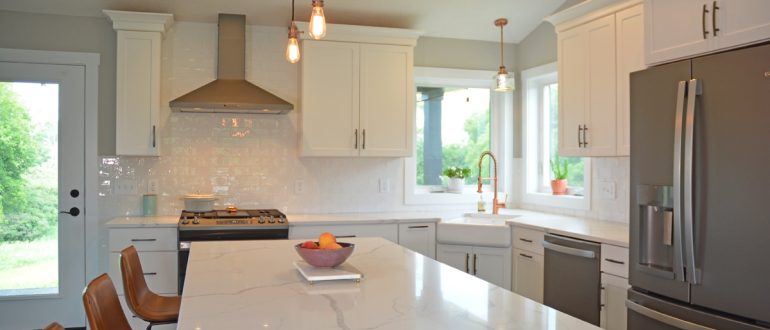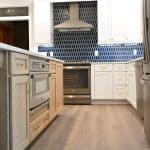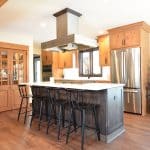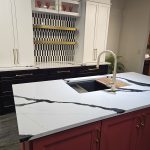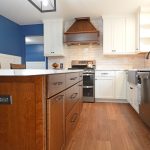Are you planning a new kitchen design or just looking to update your existing kitchen? One way to freshen up your home’s look and improve your kitchen’s functionality is by updating your kitchen lighting. Lighting plays an essential role in a kitchen but also influences your room’s style and the mood of your space. Our latest blog explores the main types of lighting as well as the latest trends in kitchen lights to help inspire your remodeling plans. Let’s get started to learn everything you need to know about creating a kitchen lighting design that you will love.
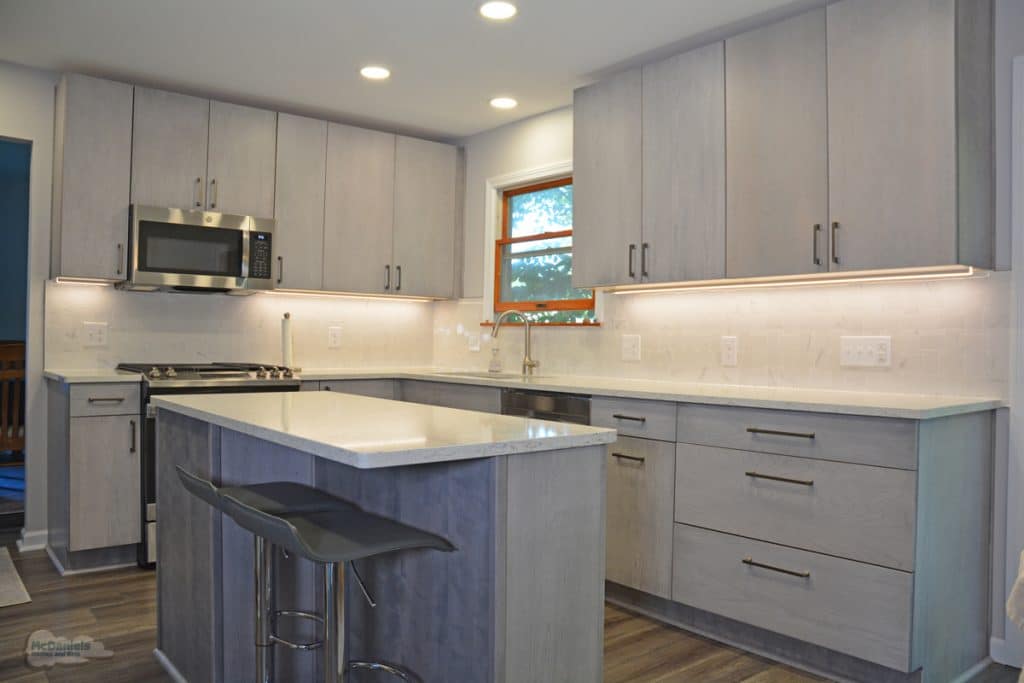
Importance of Lighting in Kitchen Design
Just like any room in your home, lighting is an essential part of your kitchen’s functionality and design vibe. Think about the difference between the bright lights of a grocery store or office building versus the softer lighting of a library or the mood lighting of a cocktail bar. Each serves its own purpose and sets the tone for that space.
Since kitchen designs are multi-functional, your kitchen lighting plan must be able to go from targeted lighting for key tasks to soft lighting for dinner parties or relaxing. You perform delicate tasks in the kitchen, like chopping vegetables with a sharp knife, reading the fine print in recipes, and measuring ingredients, and these tasks demand carefully positioned lights that help you to see clearly. Pair this with softer, ambient light sources and decorative fixtures that enhance your design vibe to create a perfect multi-layered lighting design.
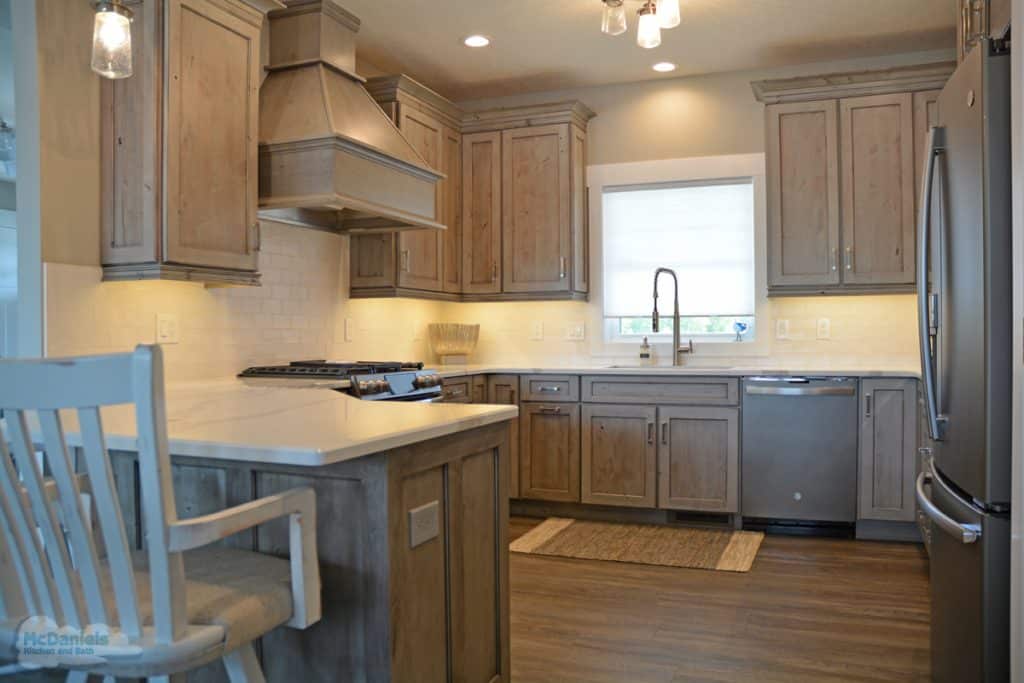
The Main Types of Lighting
In any lighting design, there are four main types, which all must work together to achieve a cohesive lighting plan. Some light fixtures can serve more than one purpose, particularly when outfitted with a dimmer switch or smart lighting controls. They also complement and enhance your room’s style with the material, color, finish, and lines of the light fixtures.
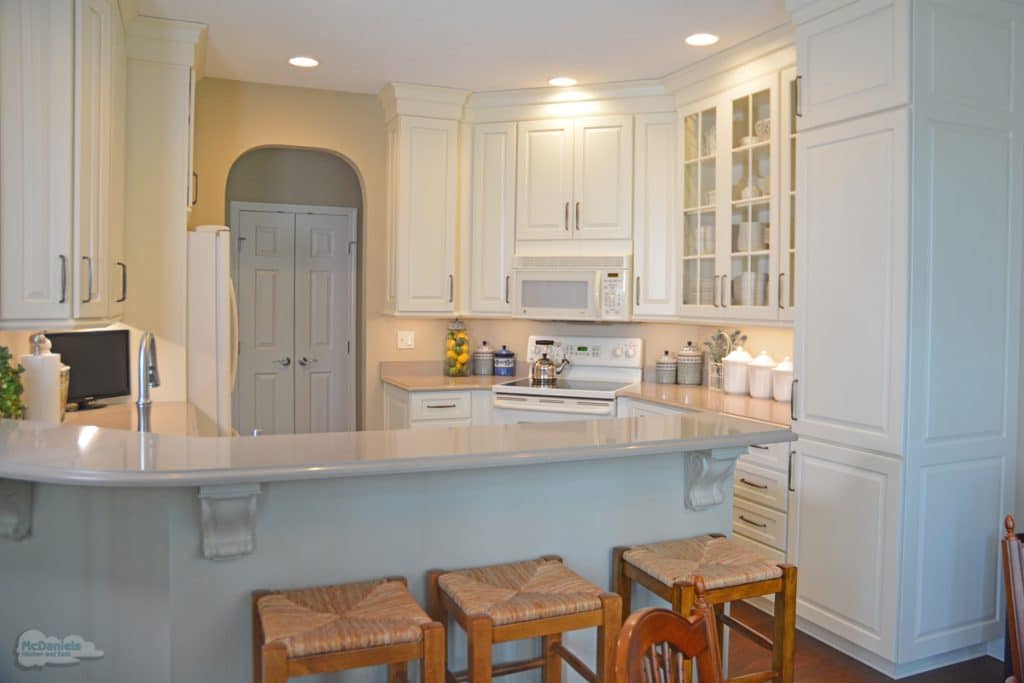
The primary types of lighting for a kitchen design include:
- Task Lighting: this is the essential lighting you need for key workspaces in your kitchen design. Include targeted lighting under wall cabinets and over the island to illuminate countertops. Focus especially on the areas around your sink and range, as well as anywhere you will be prepping food. Don’t forget to factor natural light from windows into this equation, as large, well-positioned windows are ideal for daytime work and for connecting your kitchen to the outdoors.
- Ambient Lighting: These are the softer light sources that give your space warmth and make it more welcoming. Ambient lighting can also be used to help create zones within your space, particularly in an open-plan kitchen and living room design. By including multiple light sources, such as recessed lights with a dimmer switch, table lamps, and wall sconces, you can control the tone you want to set in different parts of your kitchen by increasing or decreasing lighting levels and focusing light on specific areas. Toe kick lights or over-cabinet lights are another ideal way to provide soft, ambient light, which can also be useful when navigating your kitchen at night or during a party.
- Accent Lighting: You spent so much time carefully selecting features and accessories for your new kitchen design, so it makes sense you would want to highlight specific design elements to showcase them. Accent lighting is the essential ingredient needed to show off a tile feature, artwork, or floating shelves with decorative items. Uplighters, spotlights, or sconces are all options that allow you to feature specific elements of your kitchen design, so all eyes are on this area when anyone walks into the room.
- Decorative Lighting: While recessed lights play a role in kitchen lighting, so do chandeliers, lanterns, wall sconces, and pendants. All these light fixtures can be found in beautiful shapes, materials, and colors, making them as stylish as they are functional. Depending on your personal tastes and the size and style of your room, you could go bold with an architectural chandelier over the dining table, vintage with exposed bulb pendants over the island, or trendy with mixed metallic finishes in your light fixtures. There are endless options for decorative lighting that will perfectly fit your kitchen design aesthetic.
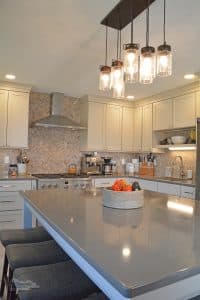
Top Trends in Kitchen Lighting
The latest trends in kitchen lighting let you turn your light fixtures into style accessories. They also create a multi-layered lighting plan that will take you from dinner with the kids to chatting over a glass of wine with friends with ease.
Create Focal Points
Don’t be afraid to get a bit dramatic with your lighting choices by creating a clear focal point that draws the eye. This is an ideal way to up your style game in a relatively low-risk manner that can be changed more easily than cabinetry, countertops, or tile backsplashes. Think about the statement you want to make and choose light fixtures based on their material, shape, color, and size.
Go for it with a modern chandelier, a large pendant light, or a light fixture in a bold accent color. Choose materials that complement your design but also stand out on their own, since this light fixture is meant to draw attention. Decide which area you want to focus on when selecting your eye-catching light fixture. Do you want to draw attention to an island intended for dining and entertainment? Is your focus on a dining table or breakfast nook? Or perhaps you have included a relaxed zone with comfortable seating, ideal for a cup of coffee and a good book on a Saturday morning. Figure out what your focal point is and use your light fixtures to highlight this area.
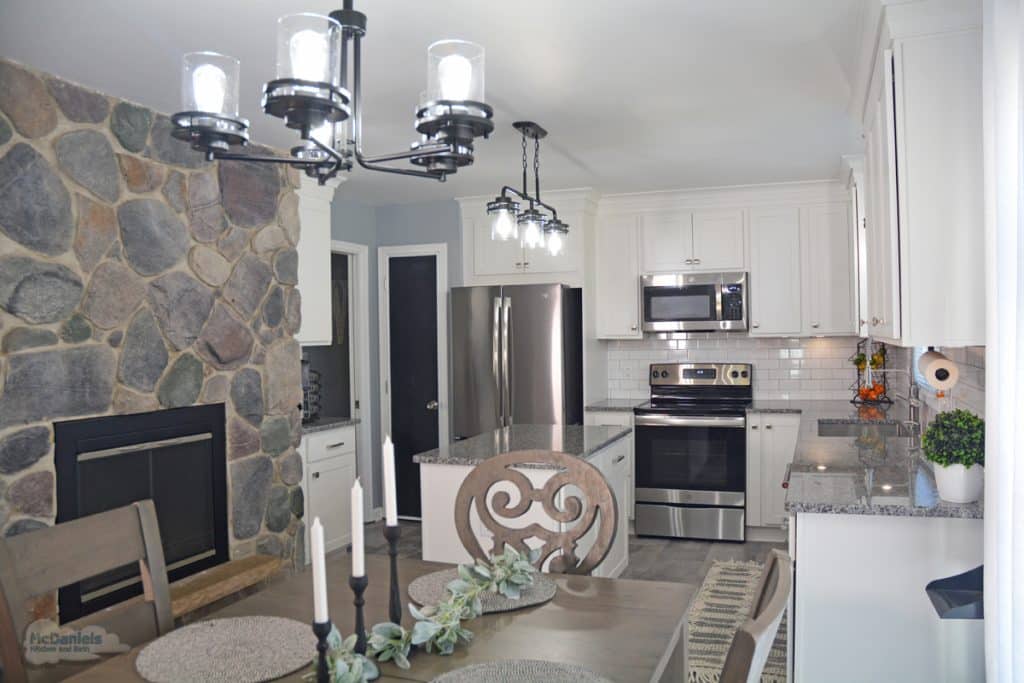
Mix and Match Metallics
This year sees a definite trend toward mixing metallic finishes in kitchen and bathroom designs, and your light fixtures are no exception. When mixing metals, stick to two tones to avoid the design becoming too chaotic. Select two metals that pair well together, either in contrasting tones where one is the dominant metal, or two complementary metals that create a more subtle balance. You could choose a single metallic tone for your lighting that contrasts your hardware and plumbing fixtures or go for it with a two-tone light fixture to create a dramatic feature. Thoughtfully choose metals that complement each other to create a design that is eclectic but still cohesive.
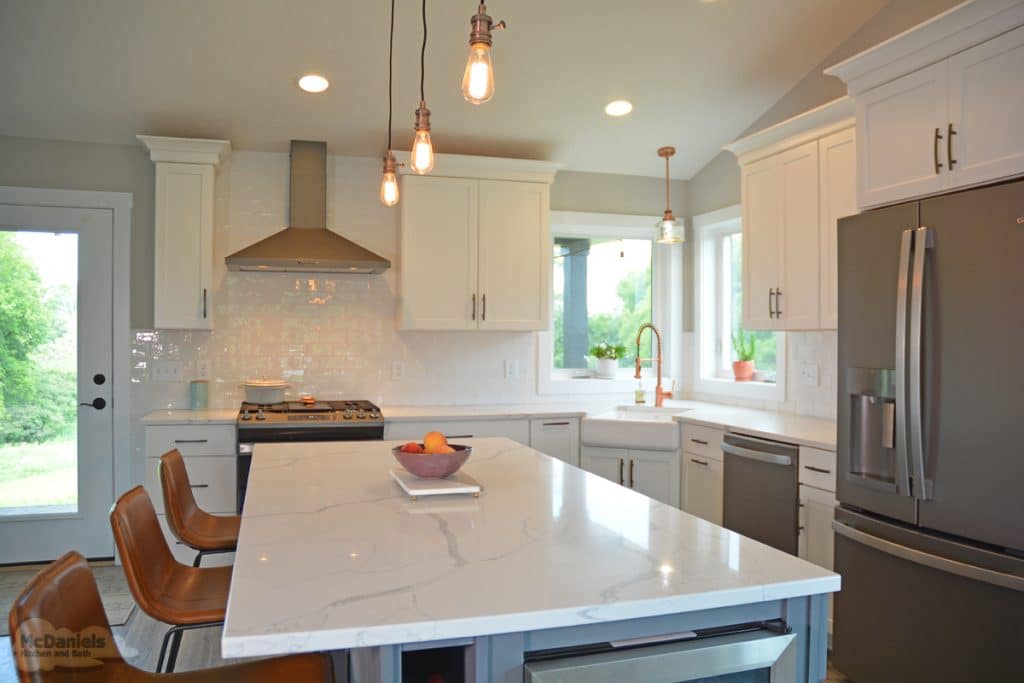
Sculptural Lighting
Light fixtures, while certainly a functional necessity, can also be so much more! Today’s statement light fixtures are the star of the show and often serve as an artistic focal point. Sculptural light fixtures marry form and function with blown glass or metal configurations that bring a one-of-a-kind shape, line, and color to your lighting design. They often follow organic design principles, bringing curves and angles reminiscent of mountain scenes, forests, and other natural influences.
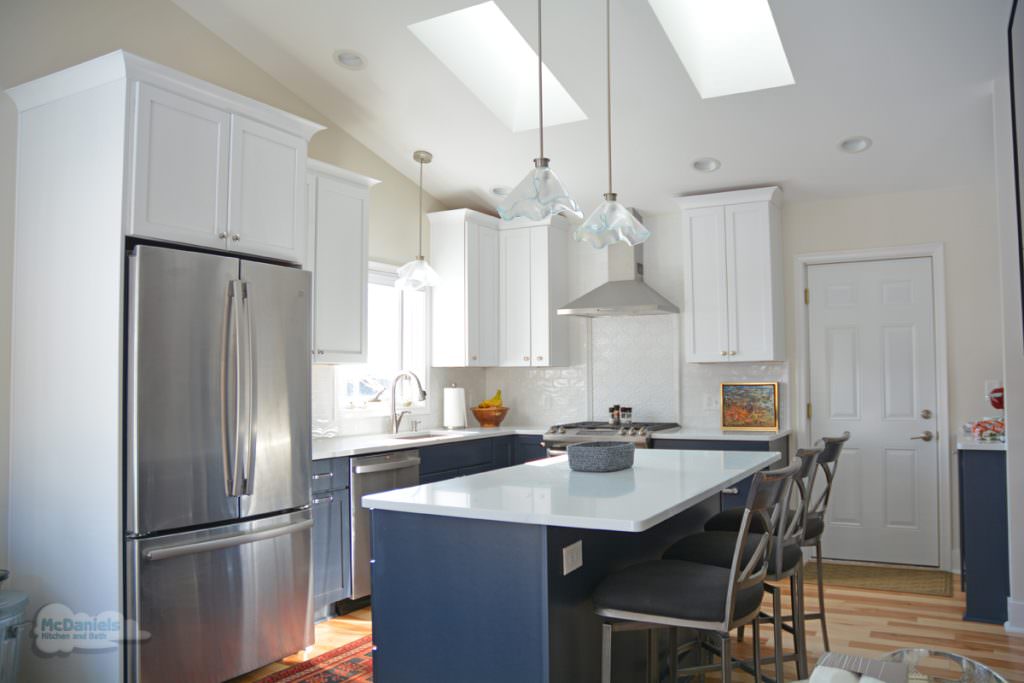
Smart Lighting
Smart technology features throughout our lives, and your home lighting system is no exception. Dimmer switches allow you to change light levels by turning a knob, but smart controls mean you can have full control of everything related to your light levels, energy consumption, light color, and more straight from your smart device. Set schedules for turning lights on and off, alter light levels in different zones, and set the scene for any time of day or event in your home with ease.
Mix and Match Light Sources
One way to create a balanced lighting design is to vary your light sources rather than relying on one light fixture, such as a pendant or recessed lights. This makes for a more interesting and pleasing lighting design and facilitates the creation of zones for everything from food prep to dining, relaxing, working, and more.
Use a large pendant or chandelier to put the focus on your dining space, include a structural floor lamp or glamorous table lamp to highlight a coffee nook, and don’t forget to incorporate natural light through large windows.
In-cabinet lighting is another ideal component of a complete kitchen lighting plan. In pantry cabinets, it helps to be able to easily see everything, while in glass front cabinets it transforms your cabinet into a beautiful display. This approach with multiple light sources also provides more opportunities to accent your room’s style with unique fixtures that bring color, shape, and texture to your space.
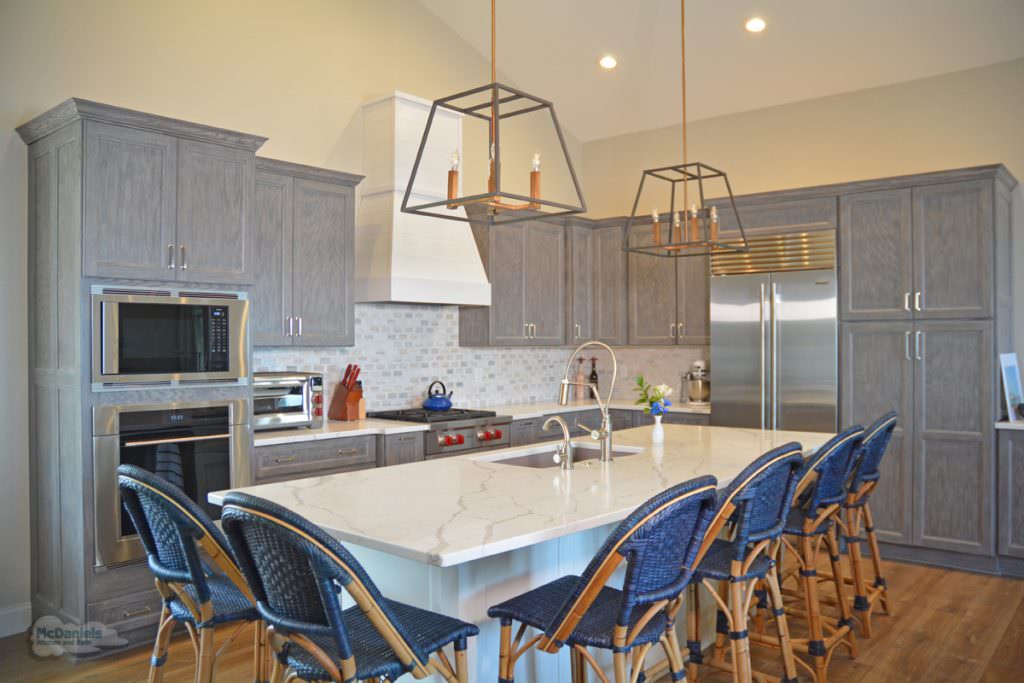
Textured Fixtures
Glass and metal are top choices for kitchen light fixtures, and come in a wide range of styles, colors, and finishes to customize your lighting design. Include metal in a shiny or brushed finish, depending on your preferred look. Organic materials are another option for lighting designs, such as rattan or rope. They add texture to a neutral color palette that gives your space depth without overwhelming it. These textured materials are ideal for a casual, rustic, or coastal kitchen design style. Give your industrial design an edge by choosing fixtures encased in a wire cage or featuring repurposed pipes.
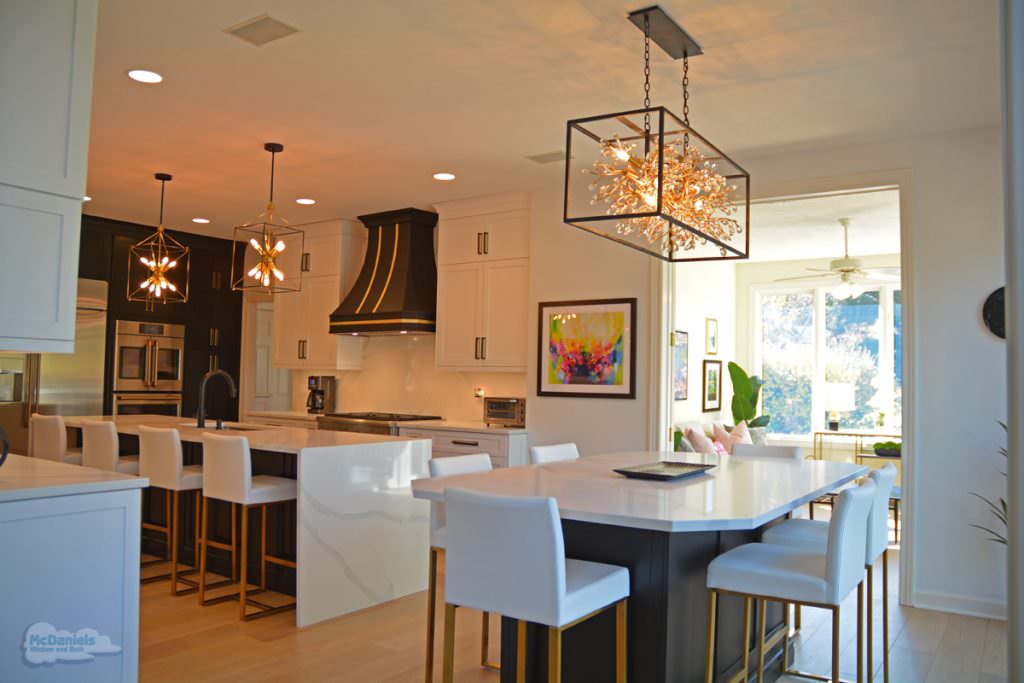
How to Plan Your Ideal Kitchen Lighting
When planning lighting for a kitchen design, start with the basics by deciding where you need key task lights and what areas you want to highlight with decorative or accent lighting. Create a multi-layered lighting scheme that allows you to go from preparing dinner to enjoying a relaxed evening meal with soft, ambient lighting. Choose light fixtures that not only illuminate but also express your style with the shape, material, texture, and color that fits your design aesthetic.
Our team at McDaniels Kitchen and Bath can help with all your kitchen design needs. Contact us today to start planning and let our design experts help you bring your design vision to life!


